Food, innovation and resilience in the face of climate change
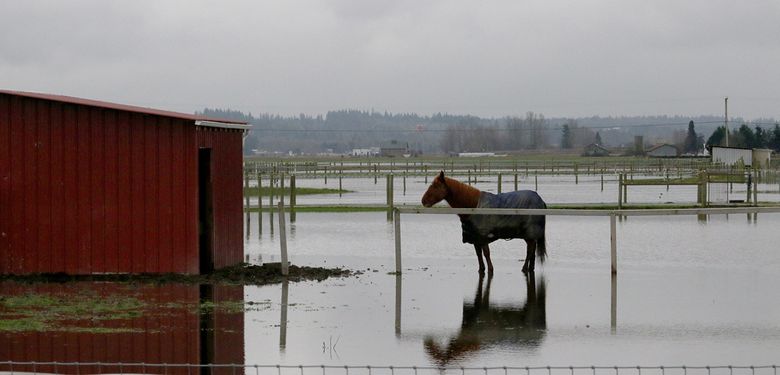
A horse is reflected in its flooded field just south of Mount Vernon. (Alan Berner/The Seattle Times)
Washington food and wine producers are used to natural weather variations, but things are growing less predictable.
Instead, he keeps his fields in grass, adds manure and plants native trees. “It’s about keeping the land intact,” he says, noting that the flood plain has a tendency to wash away. Adding organic matter can boost a field’s productivity and resilience to floods and drought.
STANDING IN THE barn-red shed to avoid the pelting rain, Nick Pate looks out the door at his struggling raspberry patch. “They’re dying a slow death,” he says.
In past summers, berry lovers have visited Raising Cane Ranch on the banks of the Snohomish River for the juicy U-pick raspberries. But the plants started to die in 2012 because the soil is too wet, Pate says. If the farm is even open for raspberry pickers this summer, it possibly would be for fewer days.
“I’m bummed,” says Pate, in a knit cap and rain jacket. “The patch was fun. We liked it when people came out.”
He has planted cider apple trees — still small, in blue protective tubes — amid the berries, in hopes they will do better. “You have to be dynamic about meeting your needs,” he says.
Pate also planted blackberries where some of the raspberries died, and they’re doing well. In addition to berries, he offers beef, lamb and honey. Apples, currants and nuts are in the works.
Pate can’t say for sure whether he’s losing his berries as a result of climate change. But there’s no doubt recent years have been wetter than he had expected. And he’s planning ahead to mitigate future effects of climate change.
In coming decades, climate scientists say, the Northwest will continue to experience warmer air and water temperatures, drier summers, lower snowpack, more extreme precipitation events and increased flooding.
Pate and others in Washington are accustomed to dealing with natural climate variability. But now they face new challenges from human-caused climate change. What does this mean for our state’s food and wine production? These four people share the details of their work to build resilience for the future.
ON HIS 40-acre farm, Pate has installed two black cisterns — 3,000 gallons each — to collect rainwater for irrigation. “If we’ll have drier summers, I’m hedging my bets,” he says.
Carbon is a principal component of soil organic matter, which helps plants thrive, and soil retain water. Worldwide, soils store more carbon than all the forests combined. But practices like tilling release carbon into the atmosphere.
“Basically, we are trying to take in carbon and not release it,” Pate says.
Past the berries, Pate planted a small “forest farm” a year ago, with support from the Snohomish Conservation District. Different crops are largely self-sufficient — green grass below, then huckleberries and currants, and larger hazelnut and chestnut trees above.
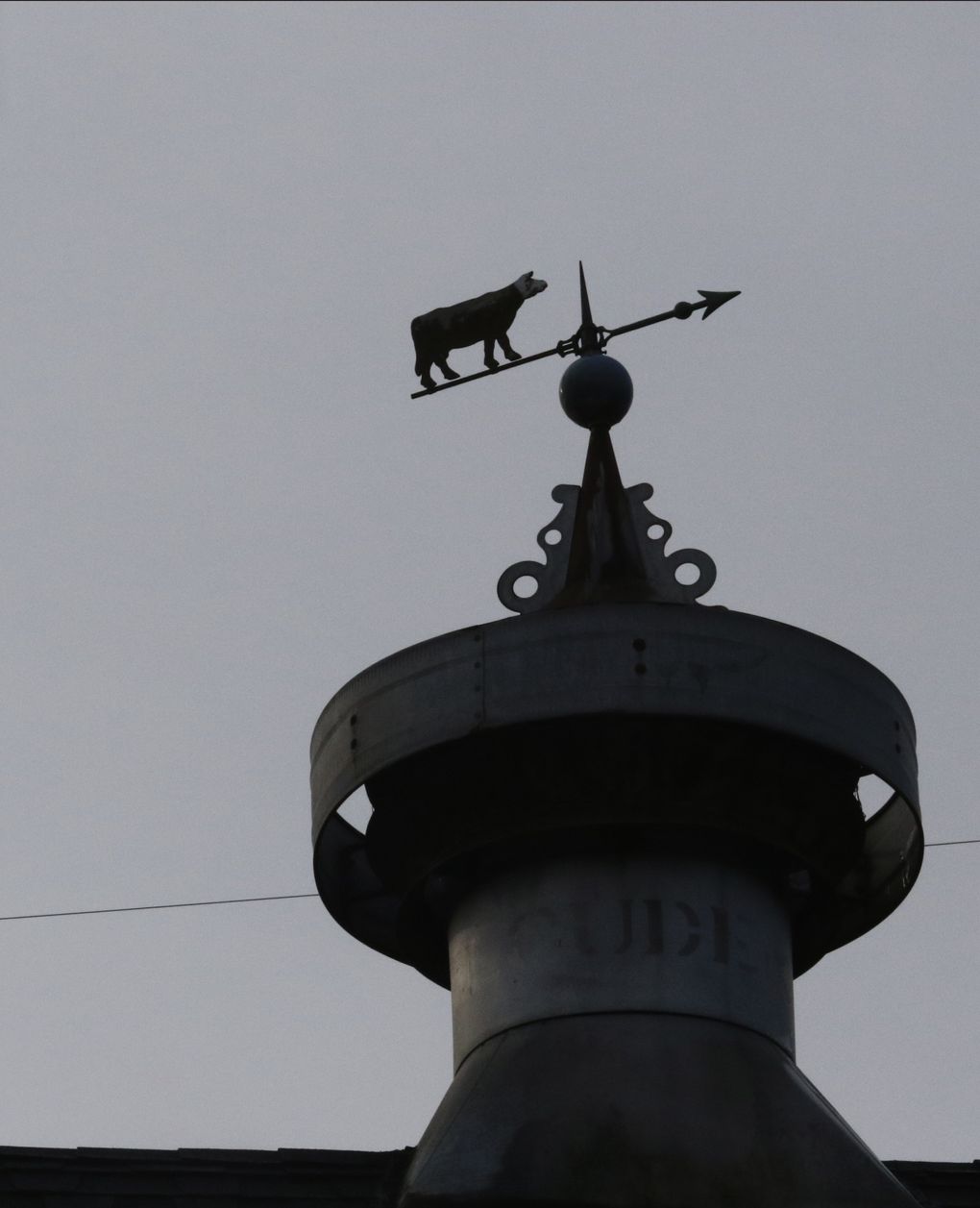
HE HADN’T PLANNED to be a farmer. In the summer of 2006, Pate was working as a “lab rat” at Fred Hutchinson Cancer Research Center in Seattle; his wife, Melissa Denmark, was a midwife. Their children, Gabby and Alden, were 4 and 2.
Melissa, who has always loved horses and hoped to own land one day, saw a hay and cattle operation listed for sale in the Snohomish River Valley.
That first autumn, as luck would have it, a major flood turned the fields into a giant lake. Their dog, Ginny, caught a trapped salmon.
Later, Pate began to fix up the place so the family could move in — remodeling the 1906 house, installing solar panels for electricity and hot water, planting willows and other native plants along the river bank.
Because of flooding concerns, he located all the electrical systems on the second floor of the house, along with the hot-water heater, and used tile on the main level.
“I worry about floods, but it’s hard to know what to expect,” he says.
When the family moved there from Seattle in 2008, Pate felt like a deer in the headlights. Gabby was a little nervous about starting first grade at a new school. Alden thought the farm was great, especially the tractor.
Ten years later, the children appreciate the open space, animals and fresh fruit.
The cow barn smells sweet, grassy, alive. A jazz station plays music to keep the cows happy and stimulate milk production.
Pate sweeps hay toward his Scottish Highland cattle. The cows are gorgeous — burnt orange in color, with graceful curved horns and long hair. “That’s Molly, and her calf,” he says. He sells beef to friends and clients, harvesting about two or three steers a year.
Grazing cows, he says, play an important role by fertilizing the soil and thinning plants.
He didn’t know anything about cows before he bought the farm. But he’s putting his conservation degree to good use.
“I think of myself as a land steward,” Pate says, setting down the broom. “I’m trying to make it better on this one 40-acre farm.”
STEPHEN JONES, a geneticist and plant breeder, runs the Washington State University Bread Lab in Burlington. Known as a maestro of grains, he has helped famous chefs like Blaine Wetzel from the Willows Inn on Lummi Island and Marc Vetri from Philadelphia develop the perfect loaf.
Jones has received national attention from The New York Times Magazine, The Atlantic and Wired. What’s less well-known is his pioneering work in breeding grains that will withstand climate change.
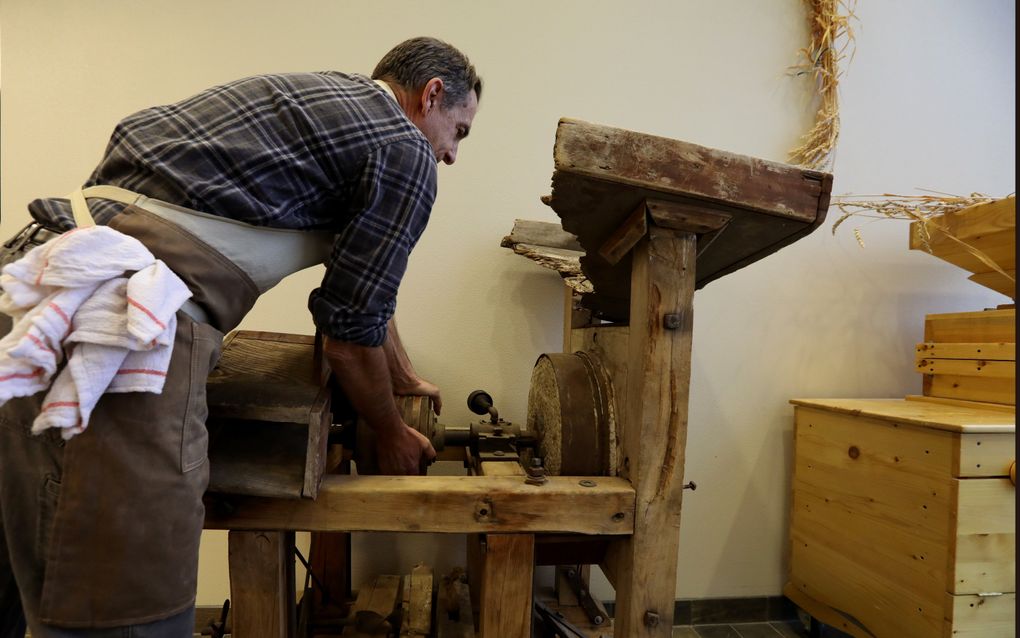
“All our work has to do with climate change,” he says. “But we don’t use catchphrases. We don’t talk about it. It’s a huge given.”
What should breeders and farmers be doing to adapt?
Jones advocates growing crops that use “fewer inputs,” like tillage and nitrogen. Basically, low-maintenance plants. “What’s important is yield in a meaningful way. In a way that protects the soil.”
Like Pate, Jones believes in keeping the soil on the farm, where it belongs.
At 6 feet 5, Jones is hard to miss, whether he’s in the lab or in the field. Usually wearing a flannel shirt and a baseball cap, he might be collaborating with test bakers in the kitchen, preparing for a speech or spraying paint on living plants.
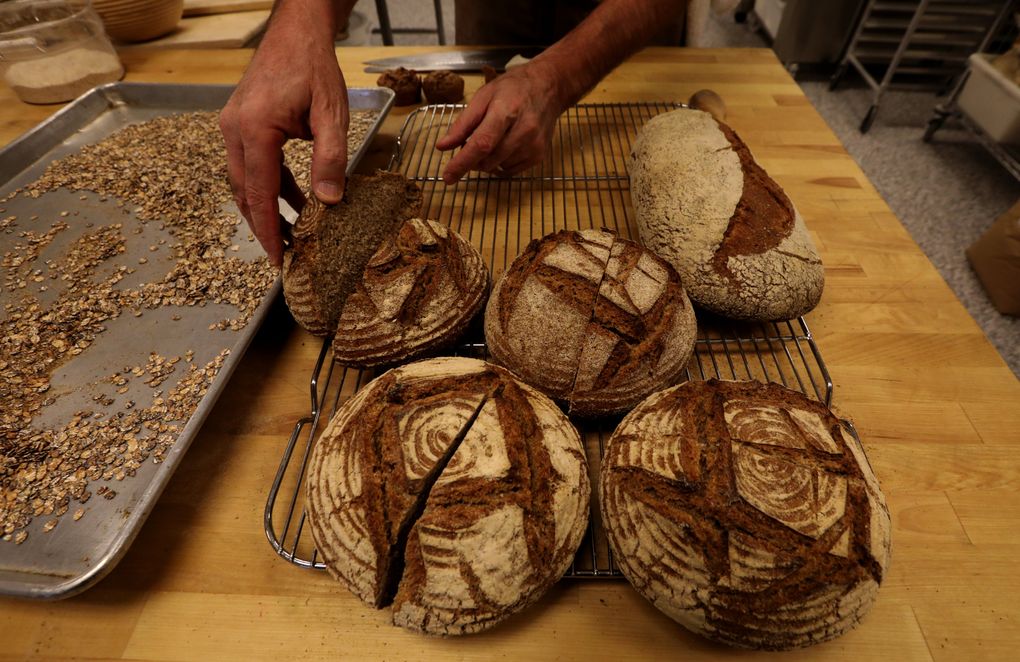
Steve Lyon runs the field program, where tens of thousands of wheat varieties grow in a field, five minutes away at a WSU research station. He trains students to select wheat plants that are healthy and strong. Plants are sprayed with a dash of blue or green paint if they’re keepers, red or orange if they’re not. Soft, colored tips decorate the field, like paintbrushes left to dry in the sun.
Jones’ relationship with wheat started in the fall of 1977, when he was a student at California State University at Chico, in the fertile Sacramento Valley. That’s when the city boy from Cupertino, Calif., sowed his first wheat seeds.
It was just 5 acres on the student farm.
But it was life-changing.
“It just fit. It seemed so right,” he recalls. He’d drive his ’48 Ford pickup to the farm to watch the wheat grow. “It was hauntingly beautiful. And that feeling has never gone away.”
For the next 40 years, Jones has always had wheat growing somewhere.
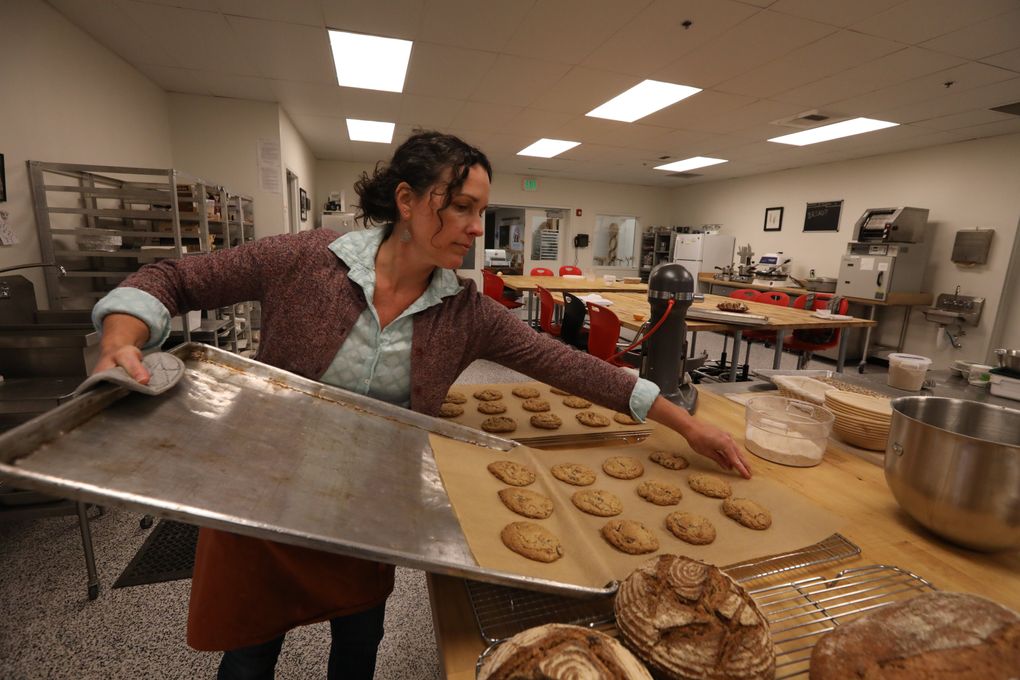
Today, he says climate unpredictability is a danger for breeders. His team is breeding grains for hotter and drier climates.
To help farmers, Jones’ team develops many varieties of wheat and barley.
“We try to fight variation with variation,” Jones says. “A field with thousands of things is pretty resilient.”
Diversity is a powerful concept, like in a natural forest, where all kinds of trees and bushes coexist. It’s basic ecology, and Jones is bringing it into breeding.
Luckily for us, diversity tastes pretty good, too. Consider the flavor, texture and nutrition in a seasonal multigrain loaf as opposed to, say, plain white bread.
“I’m very optimistic we’re going to be OK,” Jones says, “and we’ll be able to generate food in a meaningful way.”
“I CAN’T JUST sit here and do things the way I did them 30 years ago,” says Rick Small. “After all we’ve invested over the years, that would be absurd.”
Small runs Woodward Canyon Winery with his wife, Darcey Fugman-Small, in the Walla Walla Valley, where his family has farmed for five generations. (His ancestors were among the earliest farming pioneers in the valley.)
Earlier this spring, Small stood on the ridge of the vineyard, gazing out at the white frostline that cut across the hills. Neat rows of grapevines — still brown and barren — rolled away from him. Pruning would begin soon.
“Everything is honest and real up here,” he says.
Small is full of energy and speaks fast. He tries to work in the vineyard every day, talking with vineyard manager Juan Esparza, starting the tall wind machines when there’s a temperature inversion, or thinning shoots on grapevines.
He never leaves home without his pruning shears.
Small says he’s very concerned about climate change. Forty years ago, chardonnay grapes were planted on south-facing slopes to maximum warmth and light. Now Woodward Canyon is planting chardonnay on extreme north-facing slopes because it’s too hot on the south slopes. “It’s pretty obvious there’s something going on.”
Woodward Canyon’s highest point is only 900 feet, on the ridge that Small is so fond of. He is investing in the north blocks, planting higher and experimenting with different clones, rootstocks and varieties.
This year, they will get the first crop of malbec. R&D, Small calls it.
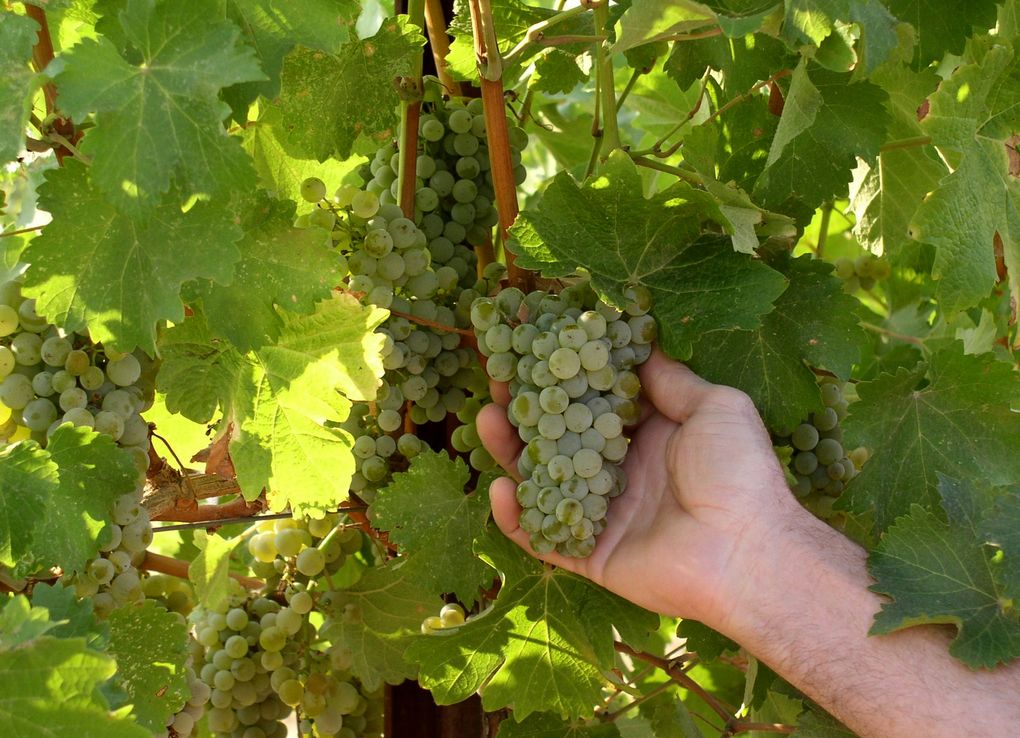
“There’s only so much you can do with your location,” he says. “We just have to keep putting grapes out there to see how they do.”
It might be decades before they know for sure.
“I’m anxious to see if we get good fruit 20 to 30 years from now,” Small says.
More than ever, Woodward Canyon is focused on sustainability in the broadest sense — economic, environmental and social.
Since he founded the winery in 1981, Small has kept careful notes every year (on temperatures, rainfall, growing degree days and brix levels). “They are no longer applicable,” he says. “It’s a moving target.”
That makes the road ahead tougher for his children, Jordan and Sager, who both work in the family business.
“We don’t know what wines will taste like in the future, how well they will age or how well they will go with food,” Small says, noting that the alcohol levels in his wines have gone up significantly since the early 1980s, due in part to climate change.
For her part, Jordan Small, his daughter, is optimistic about the future of winemaking in Washington, pointing to the tight-knit industry and research universities like Washington State University.
At 71, Rick Small is building a transition plan for the vineyard, and he is pleased his children are interested in taking over.
“Humans have adapted to change in the past,” he says. “You have to change.”
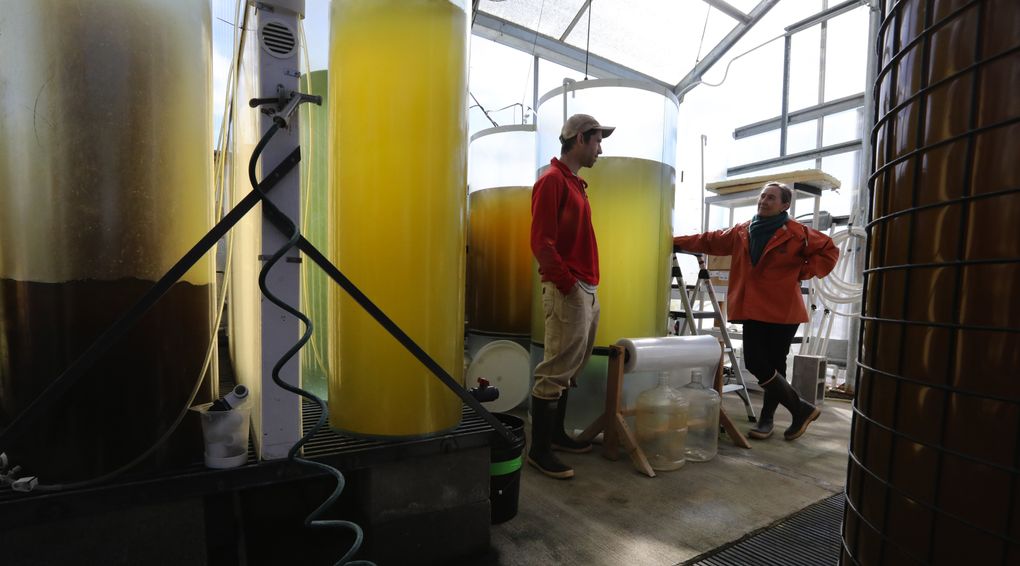
BETSY PEABODY, DRESSED in a warm jacket, gloves and boots, peers into a round tank where Olympia oyster larvae are growing. The lab smells fresh and briny. Millions of pale, brown dots swirl in the seawater below: future oysters, destined for Puget Sound.
Outside, near the Clam Bay tideflats at Manchester on the Kitsap Peninsula, hatchery staff members prepare large setting tanks. Wearing orange-and-black wet-weather gear, they lift bags of empty Pacific oyster shells, dunk them in saltwater and heave them into the setting tank.
Each tank will house 5 million or so Olympia larvae, Peabody explains. Once the larvae attach to the shells, they will be planted at strategic restoration sites in Puget Sound.
Peabody, founder and head of the nonprofit Puget Sound Restoration Fund, is committed to rebuilding native shellfish and kelp populations. She says native Olympia oysters and pinto abalone are depleted in certain areas and cannot repopulate successfully without restoration efforts.
The goal, she says, is a clean and healthy Sound to support all marine species. Shellfish, kelp and eelgrass play important roles in establishing a healthy ecosystem for other species.
Peabody is a dynamo — petite, emphatic — with sunglasses perched on top of her head. From an early age, she’s been drawn to marine habitats. As a teenager, she attended scuba camps in the Florida Keys. Throughout her life, she’s snorkeled over reefs. “That world imprinted on my brain early.”
Peabody enters a small, warm greenhouse, where 6-foot-tall columns of water gurgle. “Isn’t this cool?” she asks. Each tank contains a different kind of microalgae: Day-Glo reds, yellows, pinks. Food for the shellfish.
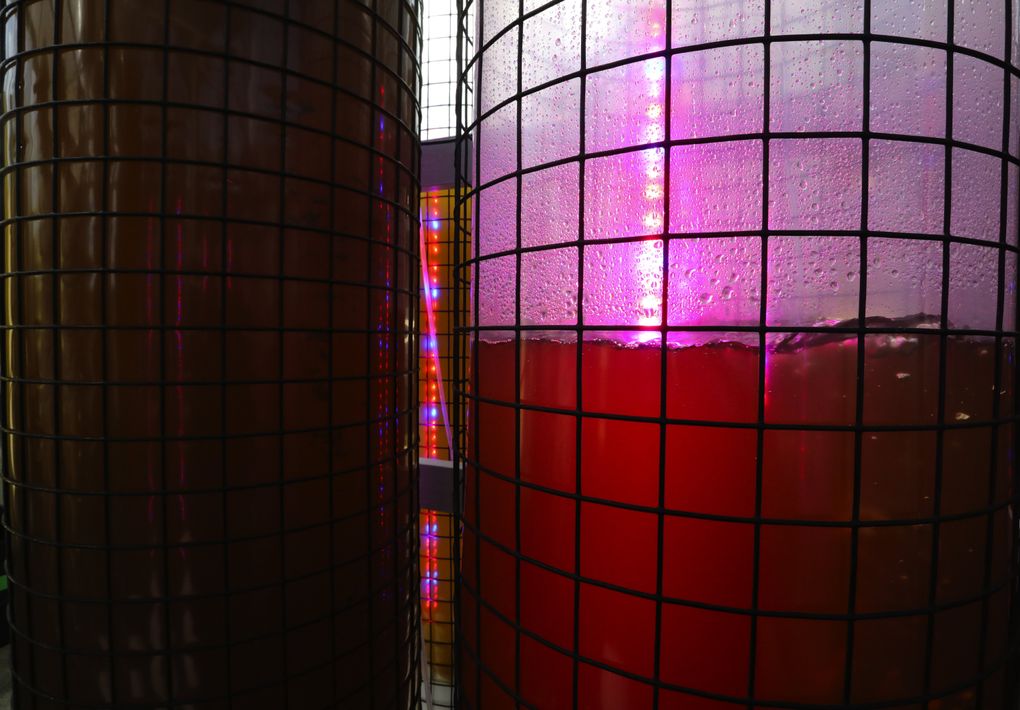
Nearby, Stuart Ryan tends to algae cultures in bubbling flasks and carboys. “He’s performing his alchemy,” Peabody says, laughing.
The conservation hatchery, called the Kenneth K. Chew Center for Shellfish Research and Restoration, opened in 2014 at the National Oceanic and Atmospheric Administration’s Manchester Research Station, an internationally recognized center for state-of-the-art research on aquaculture.
Peabody explains that establishing the Chew Center was an important strategy recommended by a state panel after Northwest hatcheries experienced an unprecedented die-off of billions of oyster larvae in the mid-2000s. Scientists concluded the massive loss was due to increased acidity in the ocean from carbon dioxide in the atmosphere.
Global ocean acidity already has increased by about 30 percent from preindustrial levels and, by the end of this century, is expected to at least double from what it was in 1750, according to scientists.
After this alarming wake-up call, people rallied to save Washington’s $150 million farmed bivalve industry. Puget Sound Restoration Fund, NOAA, University of Washington, state agencies, tribes, elected officials, shellfish growers, Pacific Shellfish Institute and foundations joined forces.
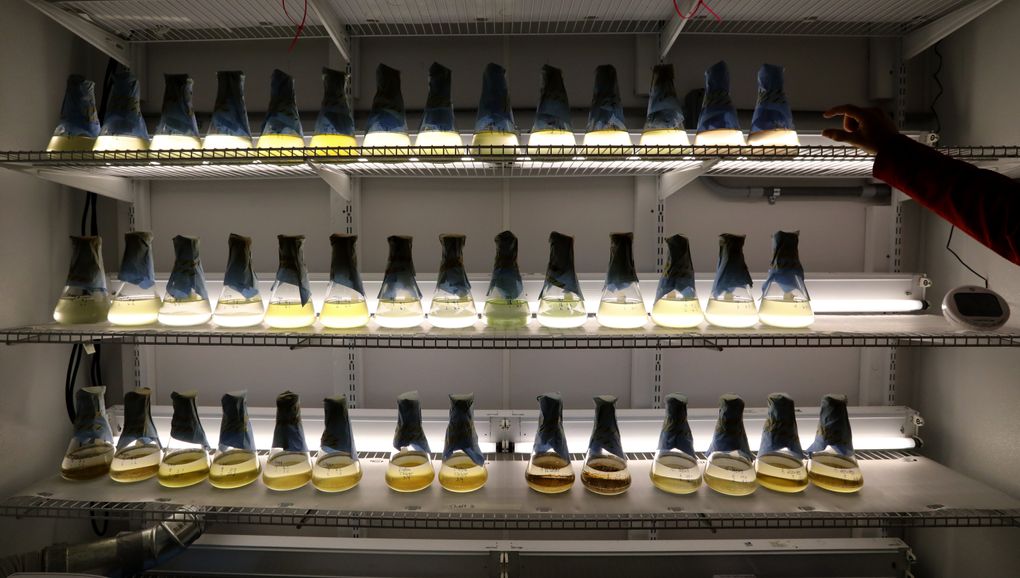
Peabody, who is quick to acknowledge she’s just one of many players, says the collective goals include reducing CO2 emissions, decreasing nutrients from land-based runoff, installing equipment at hatcheries to allow growers to monitor water chemistry, and testing to see whether native seaweeds and seagrasses can absorb carbon dioxide.
Last year, a kelp farm the size of a football field was planted near the Hood Canal Bridge.
“The question is: Can native plants be allies in the water, like trees are on land?” Peabody asks.
In a bio-secure lab at the hatchery, private company Pacific Hybreed is genetically breeding oysters, clams and other shellfish to weather the changing climate.
It will take a whole suite of actions such as these, Peabody says, to restore a healthy Sound that will sustain us all — nutritionally, culturally and economically — in the years to come.
“Ensuring food for the future is such important work,” she says.
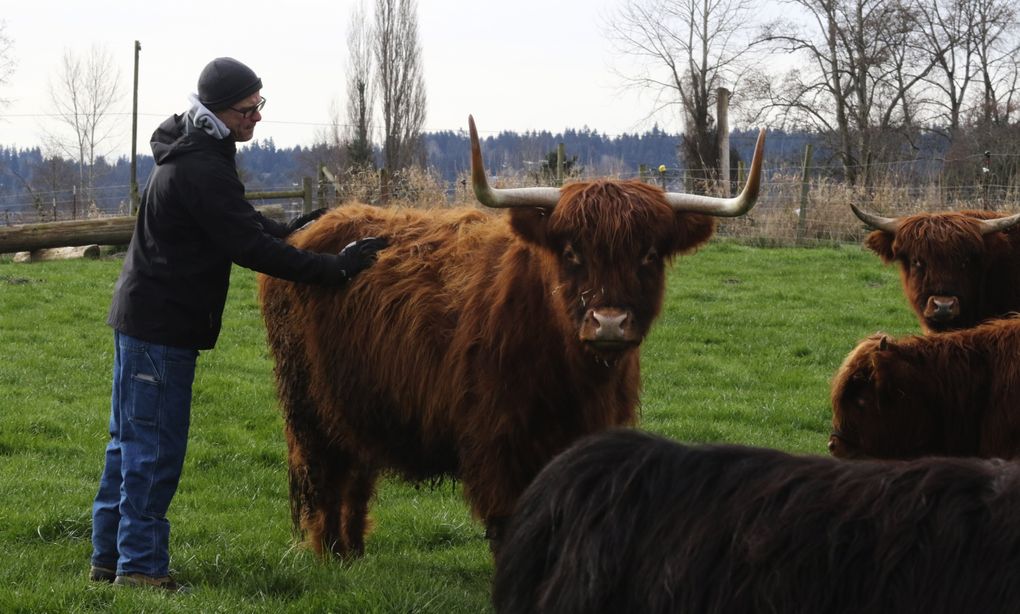

No comments:
Post a Comment